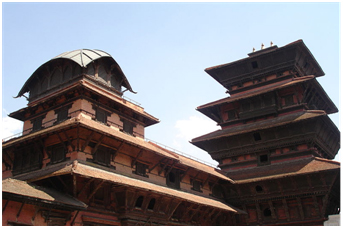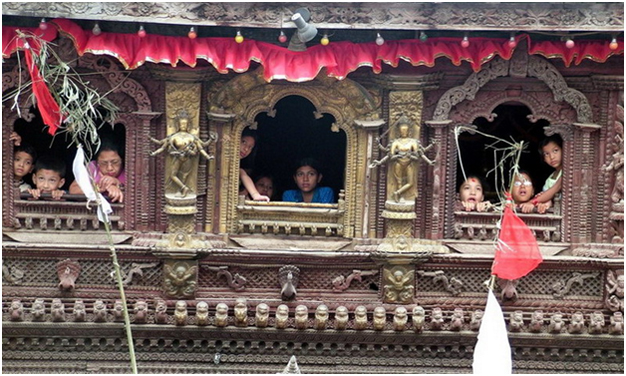- Home |
- Why With Us |
- About Us |
- Booking |
- Contact Us |
- Site Map
- Home
-
Nepal
-
Trekking
- Arun Valley with Gokyo Lakes
- Everest Base Camp Trek
- Everest- A Living Culture Exploration
- Everest Explore
- Everest Base Camp (via Thame) Trek
- Everest Base Camp with Kala Patthar
- Everest Comfort Trek
- Everest High Passes with Ama Dablam Base Camp
- Everest Mani Rimdu Festival Trek
- Everest Nagpa La Trek
- Everest with three high passes
- Gokyo Ri, Chola Pass & Chukung Ri with Kala Patthar
- Gokyo with Everest Base Camp
- Jomsom - Muktinath
- Jomsom - Muktinath
- Khayar Lake Trek
- Manaslu and Tsum Valley with Larkya La
- Upper Mustang Trek
- Manaslu High Circuit
- Manaslu, Tilicho Pass & Upper Mustang
- Annapurna Base Camp Trek
- The Annapurna Circuit Trek
- Annapurna Panorama
- Nar and Phu Valley Trekking
- Nepal Rhododendron Trek
- Royal Trek
- Saribung Trek and Expedition
- Annapurna Sanctuary Trek
- The Annapurna Sunrise Trek
- Expedition
-
Rafting
-
Peak Climbing
-
Tours
- Kathmandu-Chitwan-Jungle Tour with visit to Pokhara
- Dawn to Dusk Tour
- Historical, Natural & Cultural Tour with Camping
- Kathmandu Valley Temple Tour
- Temple - Panorama - Jungle Tour
- Taste of Nepal
- Central Nepal Tour
- Explore Nepal Tour & Trek
- Nepal Cross-country Tour
- Best of Nepal Tour & Treks
- Kathmandu valley rim Tour & Treks
- Nepal Culture Tour
- Introduction to Nepal Tour & Treks
- Nepal at a glance Tour & Treks
- Wonders of Nepal Tour & Treks
- Glimpses of Nepal Tour & Treks
- Through the Silhouette Tour & Treks
- Tent and Temple Tour
- Kathmandu-Chitwan-Pokhara Tour
- Historical, Cultural City and Jungle Tour
- Nepal Wildlife Tour
- Nepal Panorama Historical Tour
- Nepal Adventure Tour
- Nepal Pilgrimage Tour
- Ghalegaun-Ghanapokhara Homestay Tour
- Jungle Safari
- Adventure Sports
-
Trekking
- Tibet
-
Bhutan
-
India
- Yoga Tour
- About Us
-
The Great Himalayan Trail
-
Short Tours/Treks

Kathmandu Durbar Square
 Kathmandu Durbar Square lies in the heart of the Kathmandu city. The locals know this area by its old name Hanuman Dhoka – an ancient seat of the Nepalese Royalty. The Royal Palace during medieval times were not merely for Royal activities but also used as the centre of administration, cultural activities and festivals.
Kathmandu Durbar Square lies in the heart of the Kathmandu city. The locals know this area by its old name Hanuman Dhoka – an ancient seat of the Nepalese Royalty. The Royal Palace during medieval times were not merely for Royal activities but also used as the centre of administration, cultural activities and festivals.
The historical buildings and temples in the area were erected from the time of King Ratna Malla (1481 – 1520 AD) to Prithvi Bir Bikram Shah ( 1875-1911 AD) covering the Malla, Shah and Rana period of Nepalese history. The entire palace complex here is named after a monkey god called Hanuman. One can see a huge stone statue of Hanuman painted all red next to the main entrance (the golden gate) of the palace. Hanuman here is regarded as a powerful protector of the entire Durbar Square.
Prominent monuments:
Taleju Temple: The temple built by King Mahendra Malla in 1562 A. D. was dedicated to the royal deity of the Malla kings. Resting on a 12 stage plinth, the temple is 36.6 meters high. The temple is opened to the public just once in a year during Dashain festival (Sept – Oct)
Krishna temple: This octagonal temple dedicated to the Lord Krishna was built in 1649 A.D. by Partap Malla in memory of his two dead queens. There is a mention in the epigraph that the temple contains the statue of the King and this queens representing as Lord Krishna and his consorts. Jagannath Temple: The image of Jagannath was installed in 1563 A. D. during the reign of Mahendra Malla and the temple is famous for erotic carvings
Jagannath Temple: The image of Jagannath was installed in 1563 A. D. during the reign of Mahendra Malla and the temple is famous for erotic carvings
Stone Column: The stone colujmn represents the stature of King Pratap Malla in praying gesture to Goddess Taleju – The Royal Family Deity.
Degutalle Temple: A tantric goddess representing the family deity of the Malla kings is enriched in the temple and access is restricted to visitors. The temple lies opposite the stone column and was built in 1671 A. D. by King Shiva Singh and later renovated by King Paratap Malla.
Hanuman Statue: Kneeling Hanuman, the monkey god, seated on a stone pedestal and flanked by a pair of lions symbolizes strength and protection against all possible threats. The Hanuman pedestal was erected by King Pratap Malla in 1672 A. D.
Shiva Parvati Temple: The divine couple Shiva and his consort Parvati look out from the central window of the first floor. The temple was built during the reign of King Rana Bahadur Shah.
Big Bell: The bell erected in 1797 A. D. y King Rana Bahadur Shah is rung only when worship is being offered in Degutalle temple situated nearby.
Kal Bhairav: Lord Shiva in his ferocious form is known as Bhairav. This is one of the largest images of Bhairab and was erected by King Pratap Malla.
Maju Dewal: This temple dedicated to Shiva was built in the late 17th century by queen mother Riddhi Laxmi and rests on a nine plinth base dominating the square and commanding agood view of the area.
Trilokya Mohan Narayan: This Vishnu temple of late 17the century near the Kumari Ghar, was built on a five stage plinth by King Prathibendra in memory of his deceased brother. There is a kneeling image of Garuda- the vehicle of Vishnu, near the temple. During Indrajatra (Chariot festival) large crowd gather here to see the ten incarnations of Vishnu enacted on the pedestal.

Kumari Ghar: The house of the Kumari, built in 1757 A. D. by King Jaya Prakash Malla is the house of the living goddess ‘Kumari’ who is believed to be the incarnation of goodness Taleju, the protective deity. Kumari often provides her blessing from the window to the visitors.
Basantapur Durbar: The Basantapur Durbar also known as Nau-talle Durbar was built by King Prithvi Narayan Shah in 1770 A. D. Alongside there are other high standing pagodas known as Kirtipur Tower Bhaktapur Tower and Lalitpur Tower.
Gaddi Baithak: This neoclassical bilding was built by Chandra Shumsher in 1908 A. D. during the reign of King Prithvi Bir Bikram Shah. Such kind of buildinigs were constructed because of Nepalese contact with the west in the second half of the 18th century.
Kasthamandap: This 12 century wooden building is said to have been constructed from the wood of a single tree; hence Kathmandu obtains its name from this historical building, Kasthamandap. The building was used for public gathering during those days. The central image in the building consists of Guru Goraknath and there are miniature temples of four Ganeshes.
Ashok Vinayak: This temple dedicated to the elephant god Ganesh is revered both by the Hindus and Buddhists alike and is one of the most important shrines in the valley.
Dhansa: This temple was built in 1673 A. D. by Pratap Malla to start a new masked dance of Narasimha, an incarnation of Lord Vishnu.

- History
- Overview
- Ancient Nepal
- The Early Kingdom of the Licchavis
- Medieval Nepal, 750-1750
- The Malla Kings
- The Three Kingdoms
- The Making of Modern Nepal
- The Struggle for Power
- The Enclosing of Nepal
- Infighting among Aristocratic Factions
- Rana Rule
- The Ranas
- The Growth of Political Parties
- The Return of the King
- The Democratic Experiment
- The Panchayat System under King Mahendra
- King Birendra
- Movement to restore democracy
- Maoist Insurgency
- Struggle for Democracy
- King's Direct Rule
- People's Movement
- The Constitutional Assembly Election
- Government and Political Conditions
- Geography
- Festivals of Nepal
- Overview
- Bada Dashain (September-October)
- Sri Panchami or Basanta Panchami
- Tihar and Laxmi Puja - festival of lights (Oct-Nov)
- Maghe Sankranti
- Naga Panchami
- Janai Poornima (Rokshya Bandhon)
- Gaijatra
- Pancha Dan
- Teej and Rishi Panchani
- Indrajatra
- Ghanta Karna
- Buddha Jayanti
- Maha Shivaratri
- Phagu Poornima or Holy
- Ghode Jatra
- Chaite Dashain
- Nava Varsha / New Year
- Festival of Seto Machhendranath
- Matatirtha Aunsi or Mother\'s Day
- Bala Chaturdashi
- Sri Krishna Janmastami
- Rama Nawami
- Mani Rimdu festival - Everest Region
- Tiji Festival, Mustang
- Dumje Festival - Everest Region
- Flora and Fauna of Nepal
- Flowering Plants of Nepal
- Getting in to Nepal
- Climate
- Nepal Visa Procedures
- Nepalese Embassies and Consulates Abroad
- Places visit in Nepal
- Orchids of Nepal
- World Heritage Sites of Nepal
Trekking in Nepal
Expeditions In Nepal
Rafting in Nepal
Tours in Nepal
All rights reserved.



